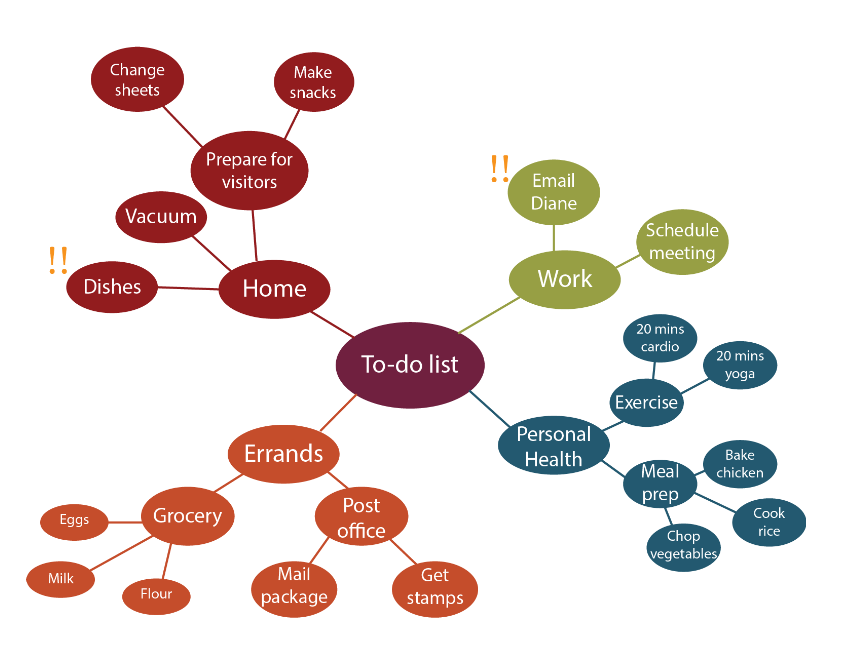How To Engage Your Team in Setting Next Year’s Goals
You can set goals for the team — or work together to set the ones that benefit each employee and the organization. Here’s how to engage the team in setting next year’s goals so that motivation rises and ownership sticks.

If you set the goal without considering the team's input, there’s a good chance no one will truly be excited or ready to take responsibility for the result. Keep reading to see how you can involve the team in shaping the goals and motivate them to succeed.
Learn how to help colleagues move from the role of passive observers to active participants in the goal-setting process.
Why It’s Important To Discuss Company Goals
When employees take part in discussing goals, they feel part of a shared mission. That motivates them to aim higher and work harder. There are several more reasons to involve the team in planning the work year:
- Diversity of perspectives — different backgrounds and viewpoints let the team see a problem from multiple angles and come up with more effective solutions.
- Conflict prevention — joint discussion helps surface potential conflicts of interest and disagreements early.
- Stronger team spirit — working together on shared goals builds cohesion and trust.
- Ownership — when people actively help set goals, they take more responsibility for achieving them.
- Adaptability — discussing goals together helps the team respond quickly to external changes and adjust plans to new conditions.
8 Steps to Take Before Discussing Discuss Company Goals with the Team
Here's a step-by-step plan to complete before you gather the team.
Step 1. Prepare
Before you start the discussion, make sure you clearly understand what you as a leader want to achieve next year.
- Analyze the company’s current situation: what worked and what didn’t?
- Identify key directions for development next year.
- Draft preliminary goals using the SMART principle: specific, measurable, achievable, relevant, time-bound.
Step 2. Choose the Meeting Format
Decide which format will be most effective for your team: an in-person meeting, an online session, or a series of short sprints if there’s a lot to cover.
Step 3. Notify the Team
A week before the meeting, tell the team about the upcoming discussion. Include the date, time, and agenda. Let people know you expect active participation. You can also run an anonymous or open survey to understand employees’ mood and expectations for the coming year. These insights will help you find the right words — and the right motivators.
Questions You Can Ask the Team Before the Meeting
For your convenience, we’ve grouped the questions by category.
Review of the Past Year
- What did you enjoy most about this work year?
- Were there moments you found difficult or frustrating (and why)?
- What would you like to repeat — or change — next year?
Goals and Priorities
- What personal professional goals are you setting for yourself next year?
- What matters most in your work in the coming year?
- Which projects or initiatives would you like to launch next year?
Learning and Development
- What skills or knowledge would you like to develop in the next year?
- Are there areas where you feel a need for additional training or upskilling?
- Which trainings, courses, or workshops would you like to attend?
Workflow and Conditions
- What in our current processes could be improved?
- What resources or tools do you need for more effective work?
- Are there aspects of the work environment you’d like to change?
Communication and Collaboration
- How do you rate current communication within the team?
- Which colleagues or departments would you like to collaborate with more?
- Do you have ideas for improving interaction within the team?
Career Growth
- Do you see opportunities for career growth in our company?
- What steps are you planning to take to move up the ladder?
- What support do you expect from leadership for your professional development?
Motivation and Recognition
- What motivates you most at work?
- How do you prefer to be recognized for your work?
- Are there forms of recognition you find valuable but that we currently lack?
New Challenges and Opportunities
- What new challenges or opportunities do you see for yourself and for the team next year?
- Are you ready to join new projects or initiatives?
- Do you have ideas for improving our competitiveness in the market?
Step 4. Prepare Materials
Gather the data and tools that will help the discussion:
- reports on current performance
- market and competitor analysis
- results of employee surveys
- examples of successful cases from other companies
- tools for brainstorming.
Step 5. Open With a Welcome and a Motivational Framing
At the meeting itself, start with a greeting and a brief overview of where things stand. Set a positive, open tone and stress the importance of everyone’s participation. Share the goals for next year. Explain why they matter and how they connect to the company’s mission and vision.
Step 6. Run a Brainstorm
Choose a brainstorming method that will generate ideas and suggestions from the team. Here are five popular options.
Classic Brainstorming. The simplest, most familiar method — great for small teams.
Key principles:
- free expression of ideas — participants propose any ideas, and no one criticizes;
- record every suggestion — capture all ideas on a board or paper for later discussion and analysis;
- maximize idea volume — the more ideas, the higher the chance of finding truly strong solutions.
Edward de Bono’s Six Thinking Hats. This method lets you view the problem from different angles. Participants “wear” one of six hats:
- white — facts and information;
- red — emotions and intuition;
- black — criticism and risk assessment;
- yellow — optimism and opportunity;
- green — creativity and new ideas;
- blue — process organization and wrap-up.
The method structures the discussion and avoids one-sided evaluations.
Mind Mapping. A visual method for structuring thoughts and ideas. Participants draw a map with the central idea in the middle and branches for aspects and related ideas. It’s convenient for discussing complex, multi-layered goals.

Walt Disney Method. Built on three roles — dreamer, realist, and critic — well suited for long-term planning and ambitious goal setting:
- the dreamer generates bold, innovative ideas;
- the realist evaluates implementation possibilities;
- the critic analyzes risks and trouble spots.
Each role plays an essential part in goal discussions.
Reverse Brainstorming. This is the way to look at the problem from the opposite side. Instead of searching for solutions, participants list reasons why the goal might not be achieved. That reveals potential obstacles and helps design strategies to overcome them.
Step 7. Discuss Goals and Set Timelines
After the brainstorm, review the proposed ideas and agree on concrete goals for the coming year. Assign an owner for each goal and talk through the steps needed to achieve it. Set deadlines and interim checkpoints.
Step 8. Close on a Positive Note
Summarize the meeting and thank the team for the joint work. If you’re discussing goals at year’s end, a round of Secret Santa makes a great finish. It eases the atmosphere and lifts everyone’s spirits.
The main idea of Secret Santa is an anonymous gift exchange: each participant becomes a Santa and secretly prepares a surprise for another player. In the end, everyone gets a gift and a dose of holiday cheer. Draw names in advance and assign who gifts whom. On the goals-discussion day, ask everyone to bring their presents. Place them in one spot and, at the end, hand out the surprises.
Our MySanta service makes organizing fast and easy. The system assigns names so there’s no mix-up. No one forgets their recipient, because the assignment arrives by email.
The service also lets you chat anonymously with your Santa or recipient, build wishlists, and browse gifts from online retailers. You can manage the game flow, track gift status, set exclusions, and more.

Conclusion
A collaborative goals discussion turns vague intentions into clear commitments your whole team believes in. Pair that ownership with a touch of holiday spirit, and you’ll enter the new year aligned, energized, and ready to execute.
FAQs
How long should a goal-setting meeting last?
For focus and participation, aim for 60–90 minutes. Use three segments: a 10–15 minute framing, a 30–40 minute brainstorm using one method (Six Hats or mind map), and a 20–30 minute goals-and-owners session, with a 5-minute wrap-up.
What should we do if there are still disagreements after the meeting?
Switch to a dot-vote: give each participant 3–5 votes to place on the most valuable goals. If there’s still a tie, apply impact vs. effort scoring for a quick, transparent decision.
How soon after the meeting should we send the recap?
Send the recap within 24 hours. Include final goals, owners, deadlines, interim checkpoints, links to materials (survey results, mind map), and notes on items parked for later. A prompt, crisp recap keeps commitment high and prevents misunderstandings.


